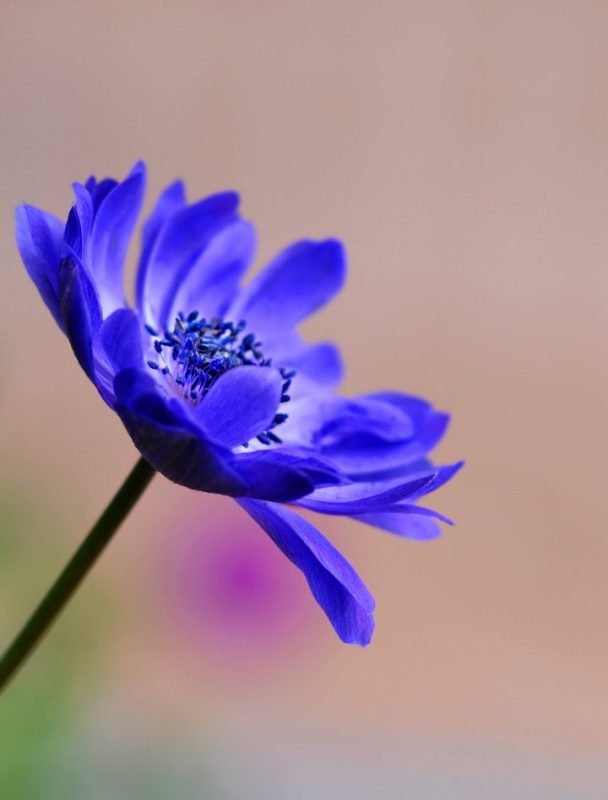
Anemone cathayensis Kitag (scientific name: Anemone cathayensis Kitag), also known as North China anemone and Ranunculus ranunculus, is a plant of the genus Anemone in the family Ranunculaceae. Perennial herb. Basal leaves 4-8; leaf blade round-reniform, sparsely pilose or glabrous on both sides, 3-lobed, central lobe broadly rhomboid or rhombic-obovate, 3-lobed near middle; petiole sparsely villous or glabrous . Scapes 17-40 cm high; involucre bracts about 5, sessile, unequal, rhombic or obovate, 3-lobed or not split; umbels simple; pedicels 3.5-5 cm long; sepals 5-6, white or Pinkish, obovate, 1.5-2 cm long; petalless; stamens numerous, filaments strip-shaped; carpels glabrous. Achenes are flat, broadly elliptic or nearly round, about 5 mm long and 4-5 mm wide. Distributed in Shanxi and Hebei; also in North Korea. Born in mountainous grass slopes or gravel slopes at an altitude of 1000-2000 meters.
Corona anemone cut flower varieties are available in red, blue, purple, lavender, pink, white, and mixed colors. Choose varieties with large buds, semi-double petals, and thick and long flower branches. The best-selling cultivation series in the European market include: Marianne, MonaLisa, Jerusalem, Galilee, Christina, etc.
Its flower language comes from Greek mythology. The anemone was born from the jealousy of Flora, the goddess of flowers. The myth is that Flora, who was jealous of the love affair between Anemone and Rebisius, the wind god, turned Alain Morian into an anemone.
There is also another theory that Adonis, the beautiful young man loved by Aphrodite, was killed by a wild beast while hunting, and the blood flowing from his chest turned into an anemone. Therefore, the anemone is a desolate and lonely flower. However, the bleakness of the world is that if the person you love loves someone else. If this is the case, you might as well send him a bouquet of anemones. Only those who understand loneliness and desolation can understand the loneliness and desolation of others.
